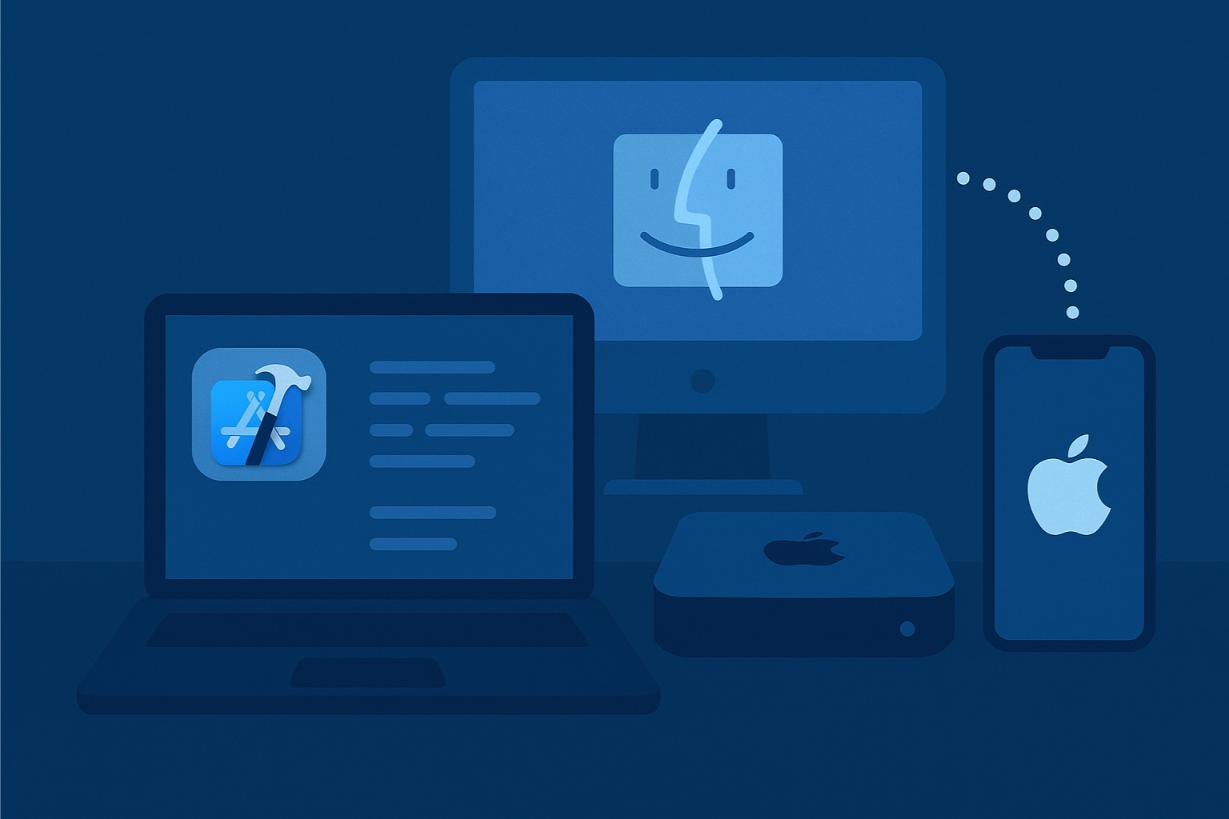Initially, Mac mini was positioned as an entry-level device for those who wanted to try Mac capabilities on a budget. Over the years, it developed into a popular line that sustained over 40 editions. While the Mac mini stood out for its compact form and affordability, other Mac devices like the MacBook line have also evolved with their own innovations in portability and power.
In this article, we’ll illuminate the history of Mac Mini from its 2005 debut to today and take a sneak peek at the key features and tech characteristics that made the line so successful.
The beginnings of Mac mini history
Mac minis were first released in 2005 as a part of a campaign targeting Windows users. As such, the release followed the BYODKM (for Bring-Your-Own-Display-Keyboard-and-Mouse) principle. Even back then, they wanted macOS to be easy for people who weren’t Mac users to get into. You still see that idea around now, with developers figuring out how to develop iOS apps even without direct Mac access.
Its purpose was to invite Windows or Linux clients to check the power of macOS without buying new peripherals, like desktops. Even today, users working from Windows machines look for ways to bridge ecosystems, including simulating iOS environments on Windows.
Although the Mac mini was positioned as an entry-level product, below the all-in-one iMac, Mac Studio, and Mac Pro, it became popular with a broader audience than it targeted initially.
Mac mini models were praised for their compatibility, processors, power efficiencies, and price. As such, they started an independent family branch with over 40 releases.
Mac Mini G4
When the Mac mini G4 series was released, Steve Jobs called it “the cheapest and the most affordable Mac ever.”
It ran on a G4 processor and supported 3.5-inch hard drives and full-size DIMMs.
Compared to Windows, it had a more user-friendly operating system and intuitive design. It was also more resistant to viruses and free from bloatware, which annoyed Windows users.
Although often criticized for its lack of memory, it offered a low-price barrier to entering the Apple ecosystem and trying it out. Since it was successful, new versions followed.
Tech Specs
-
- Processor: G4 1.25 – 1.5 GHz PowerPC 7447a
-
- RAM 256 MB, 512 MB
-
- Storage 40.0 GB HDD
-
- VRAM 32 MB
-
- Graphics: ATI Radeon 920
Mac Mini “Core Solo”
February 2006 marked a new milestone in the Mac mini’s history. That year, Apple switched to an Intel Core Solo CPU, which greatly improved performance.
The upgrade was followed by a redesign. The Mac mini Core Solo became thinner and more attractive. The new processor was four times faster than the Power PC G4. Yet, this mini still used integrated graphics, which was enough for browsing or Office tasks but couldn’t support more complicated tasks.
Mac mini “Core Solo” was marketed as an affordable PC for small financial and academic uses.
Tech Specs:
-
- Processor: Intel “Core Solo” (T1200)
-
- RAM 512 MB
-
- Storage 60 GB HDD
-
- VRAM 64 MB
-
- Graphics: Intel GMA 950
Mac Mini Core Duo

There were two releases of Mac mini Core Duo. Late in 2005, Mac mini “Core Duo” 1.66 was released, and a year later, Mac mini “Core Duo” 1.83 saw the light of the day.
Due to its two cores, the new version was generally better for multitasking. It could run several apps without significant shutdowns.
Also, it was supplied with socket CPUs, which meant that these minis could be upgraded to the later releases’ 64-bit Intel Core 2 Duo processors.
Tech Specs:
-
- Processor: 1.66 GHz Core Duo (T2300) and Mac mini “Core Duo” 1.83
-
- RAM: 1 GB
-
- Storage: 80 GB HDD
-
- VRAM: 64 MB
-
- Graphics: Intel GMA 950
Mac Mini Core 2 Duo

Mac mini Core 2 Duo series collected eleven releases in 2009 and 2010. It was the first version to support dual displays and had many other enhancements.
The Core 2 Duo processors offered better performance, especially with multi-threaded tasks. They were the first series in the Mac mini history to support 64-bit processing, which was great for the new memory-intensive software of the time.
The new Mac mini could handle more tasks simultaneously and was more capable of handling demanding applications like media editing.
The update also included a better NVIDIA graphic processor.
Tech Specs:
-
- Processor: Intel Core 2 Duo
-
- RAM: 1 GB
-
- Storage: 80 GB or 120 GB hard drive
-
- VRAM: 64 MB
-
- Graphics: ATI Radeon X1600
Mac Mini Core i5 and i7

The transition to Core i5 and Core i7 processors was announced in 2011, starting a new era in the Mac mini history and the overall evolution of Apple devices.
Core i5 and Core i7 processors use multi-core technology with better parallel processing capabilities. This version also introduced the Hyper-Threading feature, which allowed each core to handle two threads of tasks simultaneously.
It was during this time that gaming, multitasking, video editing, and programming became comfortable on the Mac mini. Intel HD Graphics 4000 also contributed to better performance with visual tasks.
Tech Specs:
-
- Processor: Intel Core i5 and Intel Core i7
-
- RAM: 4 GB
-
- Storage: 500 GB or 750 GB 7200 RPM hard drive
-
- VRAM: 288 MB for Core i5 and 384 MB for Core i7
-
- Graphics: Intel HD Graphics 3000
Mac Mini M1 – M4 editions

The Apple Silicon Mac mini, which was based on the Apple M1 chip, was released to the market in 2020. It was followed by versions based on M2 and M2 Pro chips in 2023 and M4 and M4 Pro chips in 2024.
The latest enhancements include a redesign to a smaller and more compact size. The base memory of M models was increased to 16GB, with the maximum configurable memory increased to 64 GB.
The new model supports running three external displays. It also supported Wi-Fi 6, USB4, and 6K video output.
Tech Specs
-
- Processor: Apple M chip series
-
- RAM: 8GB, configurable to 16GB
-
- Storage: 256GB SSD, configurable up to 2TB
-
- VRAM: Shares memory with the system
- Graphics: Integrated 10-core GPU
With Apple Silicon and unified memory architecture, modern Mac minis are optimized for AI tasks and machine learning workflows.
Conclusion
The Mac mini’s history saw its impressive evolution from a compact computer suitable for running only Office apps to an absolute powerhouse ideal for machine learning. Thanks to the Apple Silicon chips, today’s Mac minis can handle heavy ML tasks, including running large language models locally for development and testing.
Today’s versions offer speed, incredible performance, and excellent user experience.
Want to try the power of Mac devices for your tasks and see the difference?
Rent a Mac and check the best features of Apple computers without spending a fortune!







